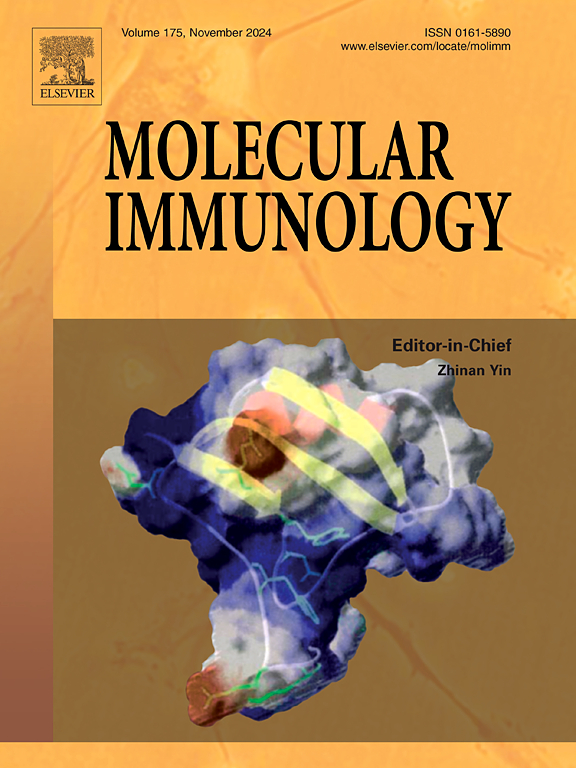Andrographolide represses HIF-1α and VEGFA expression, thus inhibiting hypoxia-induced proliferation, oxidative stress, and inflammatory cytokine secretion in human keratinocytes
IF 3.2
3区 医学
Q2 BIOCHEMISTRY & MOLECULAR BIOLOGY
引用次数: 0
Abstract
Epidermal hypoxia, hyperproliferation of keratinocytes, and inflammation in skin lesions are relevant to the pathogenesis of inflammatory skin diseases, including psoriasis. Andrographolide (Andro) is a natural labdane diterpene with diverse biofunctions. Andro has been reported to alleviate psoriasis in mice. However, the exact mechanisms need further study. Our results demonstrated that Andro inhibited hypoxia-induced proliferation of human keratinocytes. Andro also protected the keratinocytes from hypoxia-induced oxidative stress and inflammatory response. Furthermore, we found that Andro suppressed the expression of HIF-1α and VEGFA expression in hypoxia-exposed keratinocytes. Overexpression of either HIF-1α or VEGFA attenuated the inhibitory effects of Andro on hypoxia-induced proliferation, oxidative stress, and inflammatory cytokine secretion. In summary, our results demonstrated that Andro protected keratinocytes from hypoxia-induced proliferation, oxidative stress, and inflammatory cytokine secretion by suppressing HIF-1α and VEGFA expression. Our findings provide an unreported insight into the potential use of Andro as an effective agent for the treatment of inflammatory skin diseases such as psoriasis in the future.
穿心术内酯抑制HIF-1α和VEGFA的表达,从而抑制缺氧诱导的人角化细胞增殖、氧化应激和炎症细胞因子的分泌
表皮缺氧、角化细胞过度增生和皮肤病变中的炎症与包括牛皮癣在内的炎症性皮肤病的发病机制有关。穿心莲内酯(Andrographolide, Andro)是一种具有多种生物功能的天然二萜。据报道,安德罗可以缓解小鼠的牛皮癣。然而,确切的机制需要进一步研究。我们的研究结果表明,安德罗抑制缺氧诱导的人角质形成细胞的增殖。安德罗还保护角质形成细胞免受缺氧诱导的氧化应激和炎症反应。此外,我们发现安德罗抑制缺氧暴露的角质形成细胞中HIF-1α和VEGFA的表达。HIF-1α或VEGFA的过表达减弱了Andro对缺氧诱导的增殖、氧化应激和炎症细胞因子分泌的抑制作用。总之,我们的研究结果表明,Andro通过抑制HIF-1α和VEGFA的表达,保护角质形成细胞免受缺氧诱导的增殖、氧化应激和炎症细胞因子的分泌。我们的研究结果为安德罗在未来作为治疗炎性皮肤病(如牛皮癣)的有效药物的潜在用途提供了一个未被报道的见解。
本文章由计算机程序翻译,如有差异,请以英文原文为准。
求助全文
约1分钟内获得全文
求助全文
来源期刊

Molecular immunology
医学-免疫学
CiteScore
6.90
自引率
2.80%
发文量
324
审稿时长
50 days
期刊介绍:
Molecular Immunology publishes original articles, reviews and commentaries on all areas of immunology, with a particular focus on description of cellular, biochemical or genetic mechanisms underlying immunological phenomena. Studies on all model organisms, from invertebrates to humans, are suitable. Examples include, but are not restricted to:
Infection, autoimmunity, transplantation, immunodeficiencies, inflammation and tumor immunology
Mechanisms of induction, regulation and termination of innate and adaptive immunity
Intercellular communication, cooperation and regulation
Intracellular mechanisms of immunity (endocytosis, protein trafficking, pathogen recognition, antigen presentation, etc)
Mechanisms of action of the cells and molecules of the immune system
Structural analysis
Development of the immune system
Comparative immunology and evolution of the immune system
"Omics" studies and bioinformatics
Vaccines, biotechnology and therapeutic manipulation of the immune system (therapeutic antibodies, cytokines, cellular therapies, etc)
Technical developments.
 求助内容:
求助内容: 应助结果提醒方式:
应助结果提醒方式:


